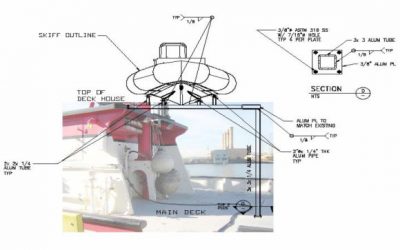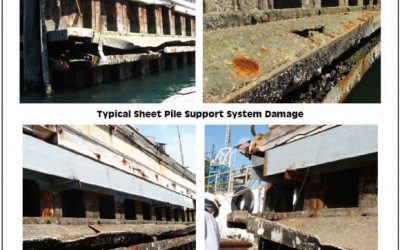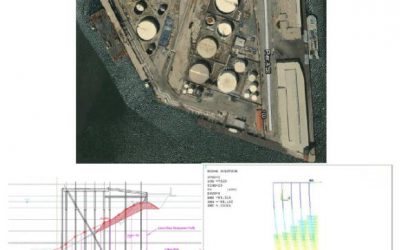Challenge:
The suitability of the existing timber fender piles at an operating marine oil terminal was brought into question by state regulators. As an interim measure the facility operator implemented measures to limit the approaching vessel velocity and draft. Our task was to perform a detailed analysis of the entire fendering system and validate the total energy absorption capability of the system.
Resolution:
The berthing energy for various vessels approaching at full berth draft and at code specified velocities were calculated. The bounding case was identified and the corresponding energy was applied to the pneumatic fender, which in turn imparted a reaction on the timber piles. A very simple math model of the tapered timber pile section was constructed, which included lower bound (in this case conservative) soil springs below the mud line. This analysis technique was selected to accurately calculate the fender pile depth of fixity and the true moment distribution considering the relative stiffness of the tapered pile section. Ultimately, it was shown that the existing fendering system does have adequate energy absorption capability to accommodate all vessels calling at the berth without any restrictions.




